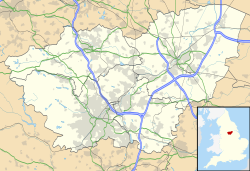| Thorpe Salvin | |
|---|---|
| Village | |
Old Hall | |
Location within South Yorkshire | |
| Population | 476 (2011) |
| Civil parish |
|
| Metropolitan borough | |
| Metropolitan county | |
| Region | |
| Country | England |
| Sovereign state | United Kingdom |
| Post town | WORKSOP |
| Postcode district | S80 |
| Dialling code | 01909 |
| Police | South Yorkshire |
| Fire | South Yorkshire |
| Ambulance | Yorkshire |
| UK Parliament | |
Thorpe Salvin is a village and a civil parish in the Metropolitan Borough of Rotherham in South Yorkshire, England, on the border with Nottinghamshire. It lies between Worksop and Harthill, and is located at an elevation of around 110 metres above sea level. At the 2011 Census, it had a population of 476, [1] down from 502 in 2001. [2]
Contents
The rectangular-towered parish church of St Peter, a predominantly 12th-century structure with 15th-century additions, is emblazoned with Norman carvings, and has been nominated among England's 1,000 best churches. It was Grade I listed in 1966. [3] The village has a public house, the Parish Oven.


